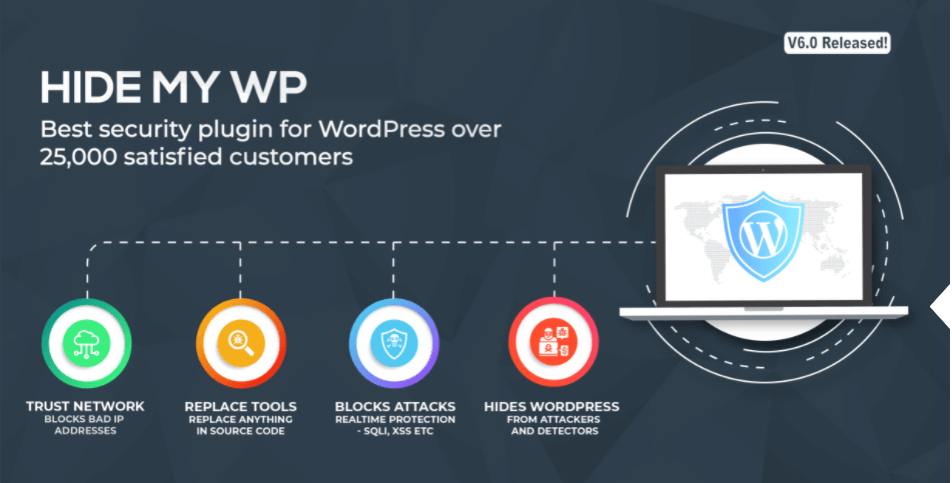WordPress is a widely-known CMS, and many trust it to create flexible and efficient websites. However, with popularity comes great attention, both good and bad. Hackers target WordPress website because of the vast users it has. There are many ways in which a hacker can attack a website. Does that mean WordPress is not secure? No, WordPress is as safe as any other CMS, but website security is our responsibility. Some security mistakes, like using unsafe/unknown third-party code, on our part bring risk to the website.
With time, the need to be more creative and innovative has increased too. The zeal to push ahead in this competitive world has made us approach shortcuts to reach the destination. In this case, the shortcut is third-party code. The need to improve the websites while also wanting an easy way out has made the website developers turn to third-party code. But how can this put your website at risk? Let’s find out.

Third-Party Code
Most users utilize third-party code to modify their websites. However, this code isn’t under your control, and avoiding security issues from the third-party code can be difficult. The third-party code comprises ads, shopping and carting technologies, image and video libraries, widgets, data management platforms, and plugins. However much the third-party codes help improve your website security, we cannot ignore that it carries risks.
It is also possible that if you use unverified code, it might have malicious code embedded in it, which can severely damage your website.
The risks involved with using third-party code that act as a backdoor for WordPress security breach are:
- It can create cross-site scripting(XSS) attack vulnerability,
- It gives an opening to code injection attacks,
- It exposes your website to Cross-Site Request Forgery (CSRF) attacks,
- It allows hackers to steal sensitive information and data from your website,
- It might harm your website’s reputation,
- It might infect your visitor’s devices with malware.
How To Mitigate The Risks Of Third-Party Code?
WordPress website protection might need a lot of your attention, but it’s not a nerve-racking task if you know about the vulnerabilities and prevention steps. To mitigate the risks of third-party code, you must follow these steps:
List Out The Third-Party Dependencies
To reduce the harm that third-party codes can do, you must know how many third-party dependencies you use. List out all of them, and ask yourself if you need all of them or if you manage without any of them. Trust me, looking at them is enough to come to a decision. When you decide that you don’t have to depend on particular third-party codes, remove them.
Vulnerability Detection
Once you keep the ones you need, scan for vulnerabilities. We have many WordPress security scanners like Scan My WP that help you lure out the vulnerabilities in code. Once you check for the issues, try to fix them. If there aren’t any fixes to the security issue, ask the third-party code developer for security patches.
You must also make sure that the new version is safe for your website too. Getting rid of one vulnerability doesn’t mean that another will not show up. You must always be looking out for security issues.
Use A Trusted Third-Party Code
Always use trusted third-party code. Make sure that the third-party code developers you choose have security as their priority and give out security updates and patches often.
Third-Party Code Separation
It’s always best practice to separate the third-party code from the first-party one. You can use iframes to do that. Iframe creates a separate space for storing third-party code without needing to host it on your website. Doing this will help increase your website security.
Implement Subresource Integrity
There is a possibility that a hacker can modify your current third-party code and insert malicious code into it that can harm your website. To prevent any harm, you can implement subresource integrity to your browser that blocks any third-party code different from the previous security check-up. This way, your website will be secure from malicious code.
Use Additional Security Methods
We know that third-party code can cause damage to your website if not safe. And in case you are unsuccessful in locating the insecure third-party code and fall prey to vulnerabilities, you should have an additional layer of security to your website. WordPress security plugins like the Hide My WP provide you just that. Here are some advantageous features of the Hide My Wp security plugin:

- It lets you hide or rename the themes and plugins folders.
- It can hide your WordPress.
- It helps you change WordPress permalinks.
- It will help you hide the login page of your website to prevent brute-force attacks. This feature will help you set up a login query and login key.
- It has a firewall that can block attacks like SQL, XSS, CSRF, read arbitrary files, and brute force attacks.
- It informs the user about:
- Value (How they hack you?)
- Page (Which plugin did they use?)
- Impact (How dangerous is that?)
- IP/ users (Where are they from?)
- It will assist in hiding or renaming WP-admins.
- It will disable direct access to PHP files and directory listing.
- It will let you minify HTML and CSS.
- It will allow you to change anything in your source code.
- It has anti-spam included.
Recap
- WordPress security is a topic that catches attention everywhere. The reason is simple, WordPress is prone to attacks from hackers due to its popularity. There are many ways a hacker can use to attack a website, and third-party code will assist in creating vulnerabilities that an attacker can use.
- Using third-party code might help improve your website performance in few ways. But we must be careful of the threats it poses to the website security. Hence, we should take appropriate steps to protect the website.
- Some ways to reduce the risk of third-party code are:
- Minimize the use of third-party code and only use the necessary ones.
- Use trusted third-party code.
- You can separate third-party code from the first-party one using iframe.
- Apply subresource integrity to your browser.
- Use WordPress security scanners like Scan My WP to detect vulnerabilities.
- Have additional security to your website by using WordPress security plugins.
Also Read: What Is A Path Traversal Attack?
